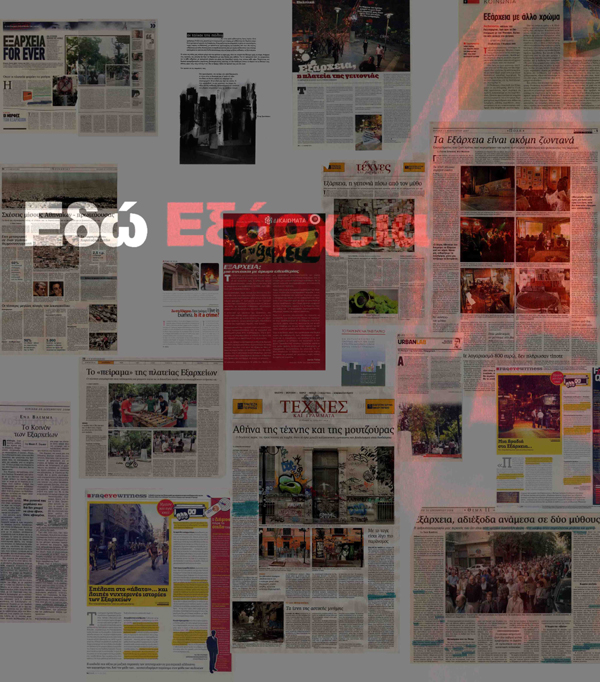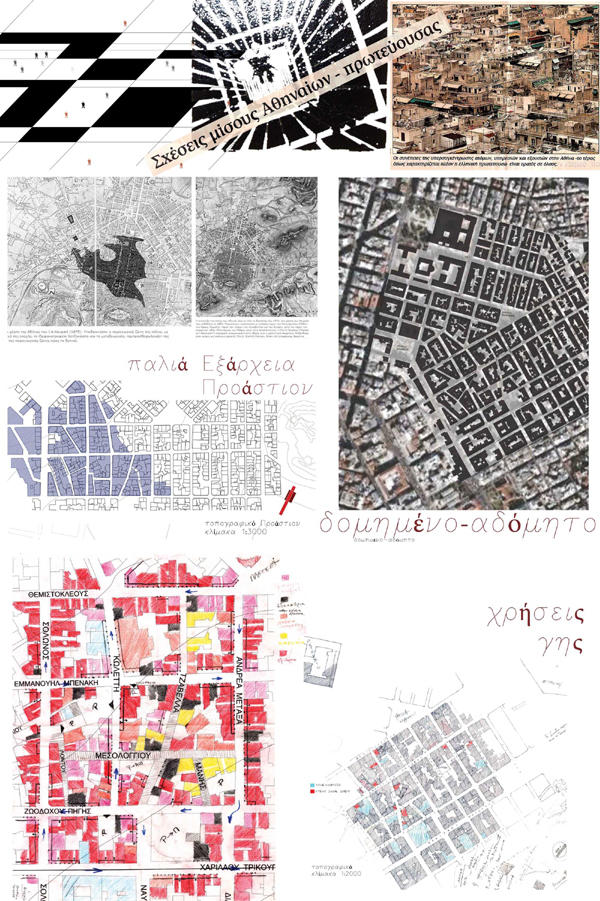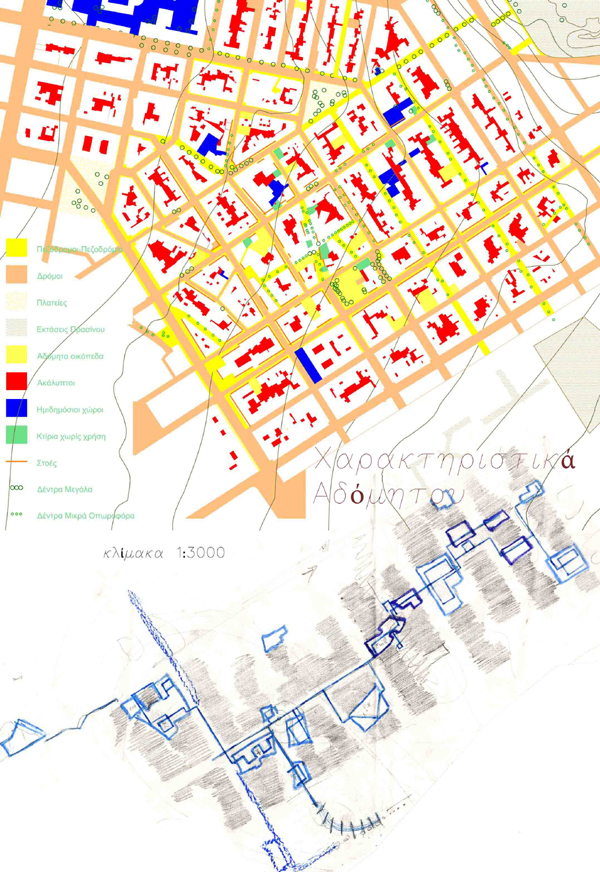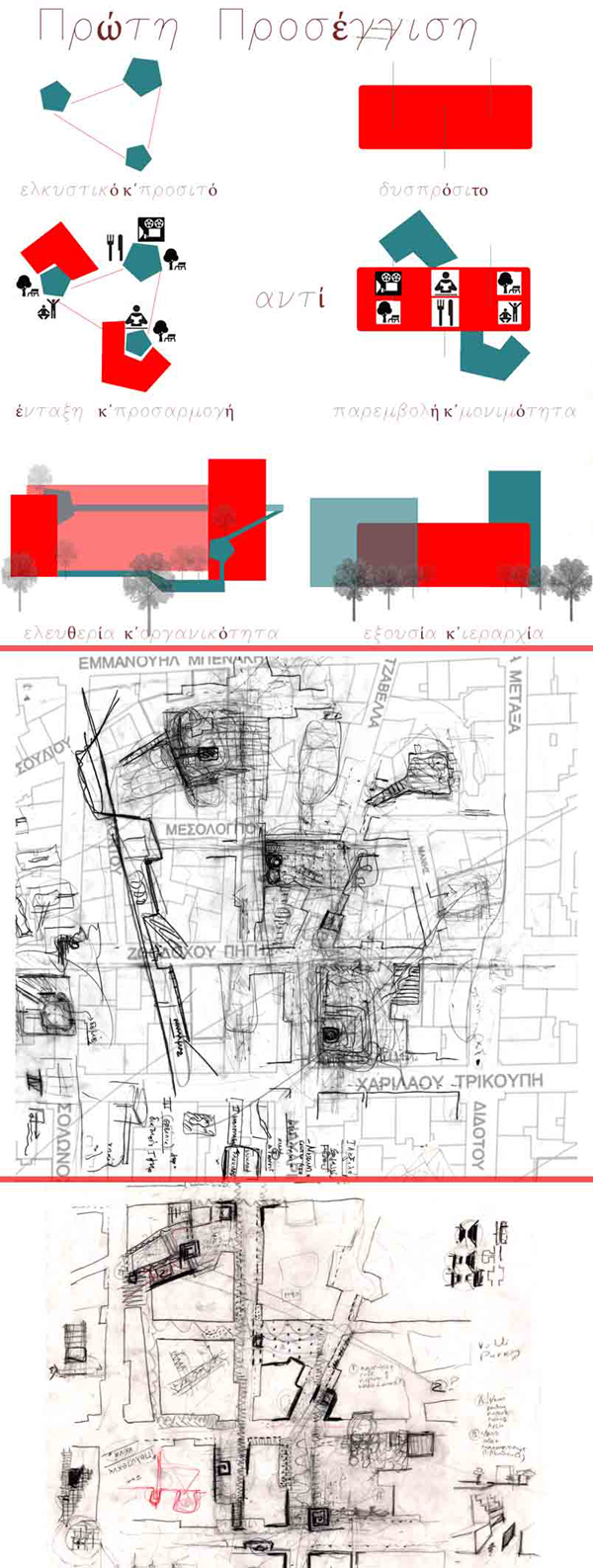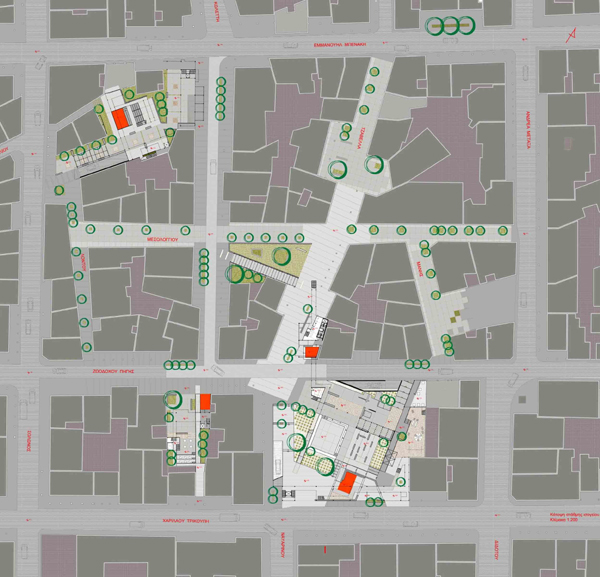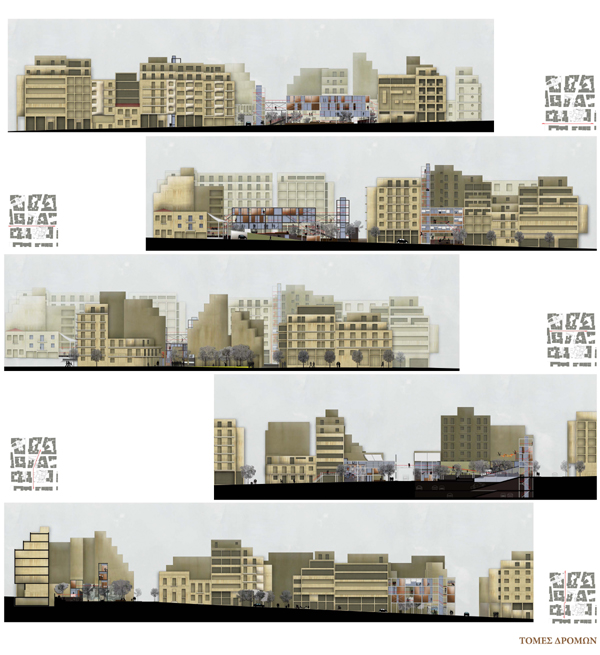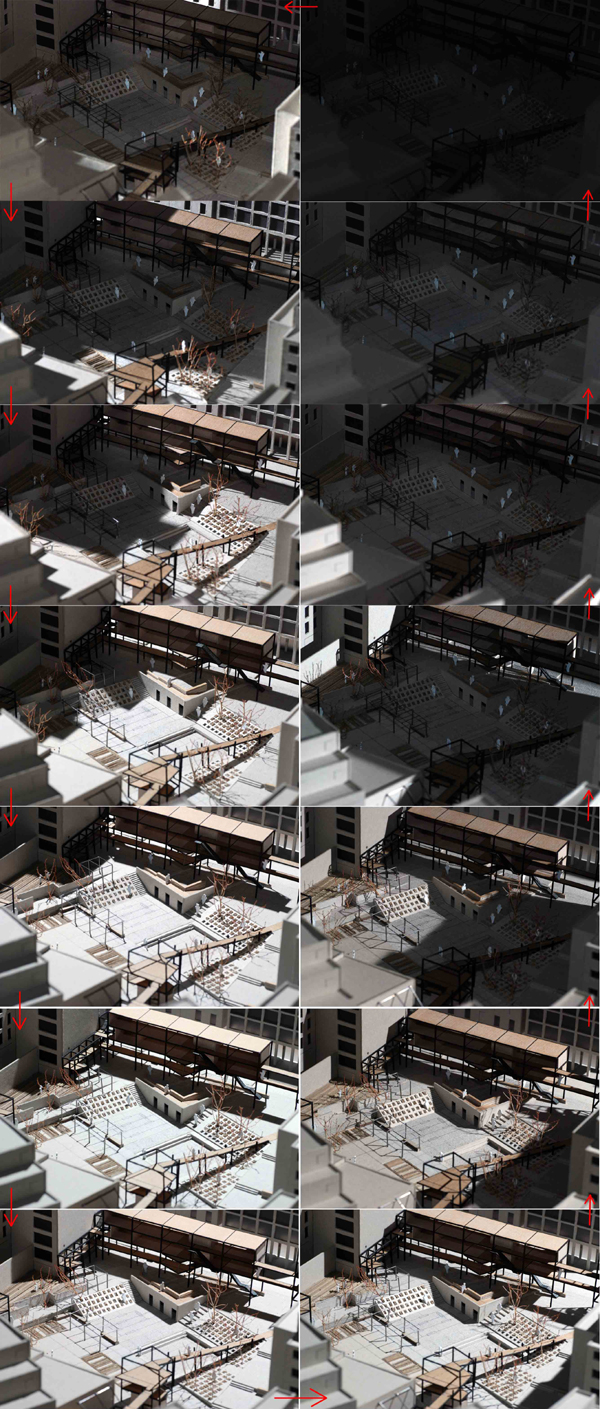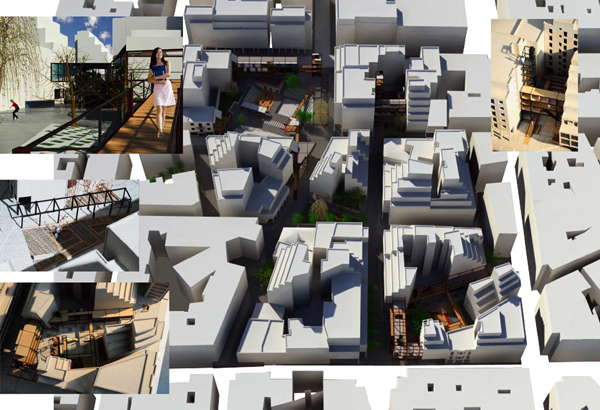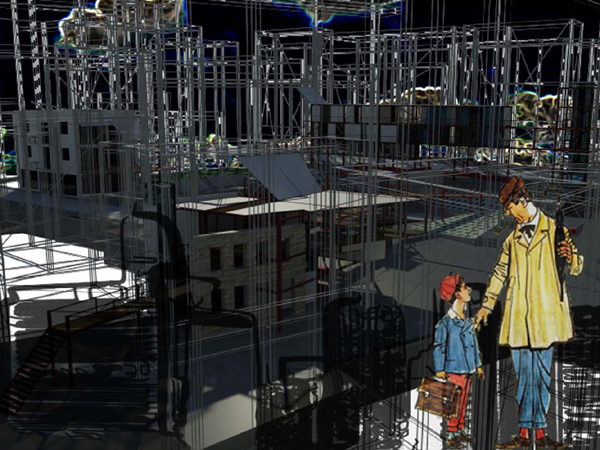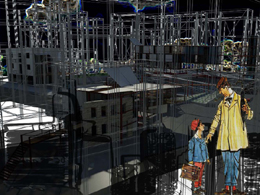STUDENTS PROJECTS
PROJECTS 2011
Student : Joni Silaj
Supervisor: Ksanthi Th, Patrikios G, Keventsidis K.
Demokritus University of Thrace
Presentation date : 01/04/2011
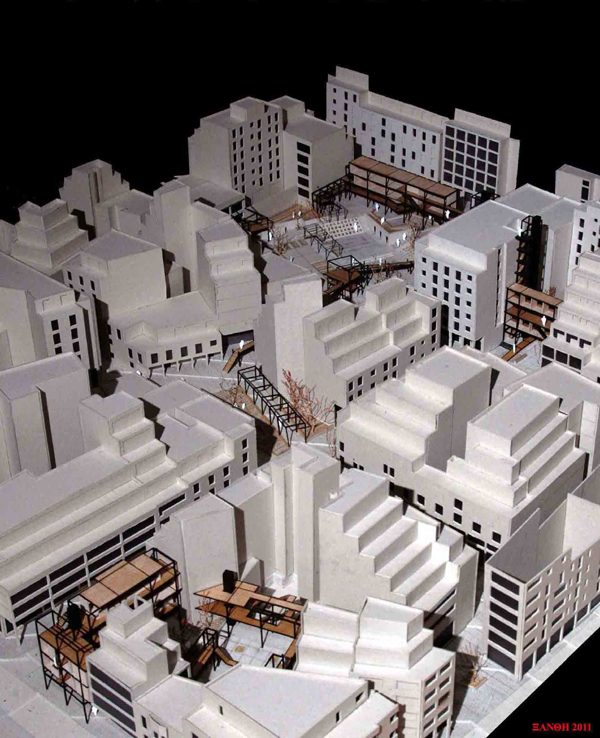
The urban drift is used as first tool for identification and reading of the city. It constitutes a form of 'automatic writing', that through this, the drifter, moving in city's finite limits, experiences it each time without exhausting it. Via the drift there are mainly two characteristics that become distinguishable:
- the "hard" elements of the city environment, such as the size and the form of the buildings and the optical escapes,
- the "soft",variable elements, such as the game of presence and absence of human activity, action and stillness, light and shadow, sound and silence, the effects of time and ideas.
Thus, it is understood that the drift is based on the interaction and the interrelationship of these two elements. So, we can say that the movement of the drifter can
- be attracted
- be repelled
- remain constant, having these subindents:
1. to continue the path according to the city network
2. to change the path according to his personal desires and necessities
3. to change the path according to an element that aims to strengthen a qualitative or quantitative characteristic of the city depending on his own wishes.
The third case, that of the immutable and constant drifting and it's subindents, takes designing ideas dimensions in a congested, densely populated and also socio-political boisterous neighborhood of Athens, Exarcheia. What characterizes this neighborhood is it's alternative ambient, the heterogeneity and the peculiarities arising from the proximity to the center of Athens, some faculties (Architecture, Education, Law etc.) and some main urban traffic arteries (Akadimias Avenue, Patision Avenue, Alexandras Avenue).
Exarcheia - with the multiplicity of structures (historicity), flows (current situation) and dynamic - constitutes a pilot area for the formulation of my position towards social phenomena - problems, such as lack of greenery and open space in the city, alienation and abandonment of the general center of Athens, traffic congestion, the problem of parking, the fragmentation of the central operations, the loss of city spots and the abandonment of "remaining" space into parking islands and weak patches of grass.
Thus, arises the need to create an Urban Core, a concept in which the city could gain an organic entity and also, to add to the design of the city features such as the daily supply, the alternation of the uses and the common social life. To create a Network linking the open spaces of the city so as these spaces may become an instant destination of the citizens, in order that free - open - space of the city, to be not only the - what we call - public space (squares, parks, pavement). To design public space with alternative sense and philosophy (not another square), with various activities, recreation and rest (social events) in the new center environment of the city center. The lost landscape of the city center may then resurface, setting the issue and the debate on an Artificial Nature. To find more parking areas. To improve environmental conditions in the city center through the varied and continuous use of green. It is required that this intervention does not alter the local character of the neighborhood that I study and to play the role of an intermediate space of sequential levels and uses connecting the pathways and the functions in an interactive relation with its immediate urban environment. In conclusion, the city through these spaces to be creative and democratic.
The empty plots identified in the region and the "dead" buildings (buildings without any use such as preservable buildings, abandoned shells, buildings to be demolished ) become the basis of the design parameters for achieving the wider objectives of the review of the public space and returning it to the city. The City Gaps give rise to questions towards the lack of control and the built environment. Thus, are presented two different sets of relations:
1. The constants (the height of existing buildings, the entry-exit points of them, limits of the inner courtyards, the relation with the street, the existing arcades)
2. The variables (the optical escapes, the variability of uses, the density of greenery, the width of the pavement, the various landmarks, color and materials)
The basic design parameter a.ka. the need for open outdoor spaces inside the city, finds common ground with the reappearance of microcosmos of Athenian's "Urban Ecosystem". Therefore it is proposed:
- The development of the free spaces turning their dynamics towards the city that surrounds them with the variety of outdoor activities - functions in opposed to the logic and practice of that of valuable consideration.
- The creation of "green corridors" flowing and spreading in the city.
- The creation of game and socializing point cores tha are unified through the sidewalk and the open-spaced network that either exists or is created after space alienation.
- The creation of light (made of metal or wood ), indoor architectural constructions, the Urban Rooms, which being part of each open land, participate in the landscaping through their versatility and their tendency to change acquiring different uses each time.
- Regulations of traffic for the controlled use of car, aiming for the proper function of the sidewalk and the open-spaced network.
- The creation of two-storey underground parking space.
- The inclusion of the "empty" buildings and the other infrastructure facilities, located around the perimeter of the plots, in each land assigning them a use according to the variety of needs.
These structures (scaffoldings, small city plateaus, urban corridors, urban rooms etc.) are used :
- For the enrichment of the free - open space
- For the readability of the used design language
- As transparent elements and a distinctive bridge between low buildings (neoclassical, two-storey) and high rise buildings (blocks of flats) of the 70's and later
- As game elements in the city
- To reenforce the drifting of the pedestrian (providing shade, sustaining planting etc.) but also as useful alternative routes through the urban web
Possible uses of the city rooms are:
- Reading and Internet rooms
- Social and student clubs
- Rest rooms - temporary staying - Hostel
- Music rooms - Conservatory
- Children rooms - Day nursery
- Offices
- Excibition rooms - City museum
- Art and workshop rooms
- Tourist kiosks
- Hygiene rooms -Bathhouse
- Recreation booths - Cafeterias etc
- Book kiosks
- Sport clubs
